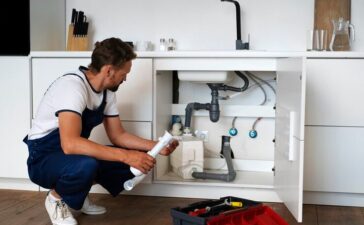Introduction
Are you sick of basic and uninteresting household items? Have you ever considered giving them a personal touch? Epoxy resin is the ideal option, so you need not seek any further. Epoxy resin is a versatile substance that may be used to create beautiful patterns on a variety of surfaces. In this course, we will investigate how to combine epoxy glue with various things to create wonderful works of art. Now, put on your apron and let’s begin!
The necessary resources
To combine epoxy resin with things, you will need the following: -a mixing container -epoxy resin
-hardener
-stirring stick
-objects to be encapsulated in resin.
The initial step is to collect all essential items. You will need a mixing vessel, epoxy resin, hardener, stirring stick, and things to embed in the resin. The mixing container can be any heat-resistant container with straight edges. This will make it easier to obtain a mixture devoid of air bubbles. Epoxy resin and hardener are two components that must be combined for optimal curing. On the box, the ratio of resin to hardener will be specified. Make sure to properly follow the directions! Once you have acquired your ingredients, you may begin mixing.
Objects that can be combined with epoxy resin
Epoxy resin is a flexible substance that may be utilised in several applications. It may be used with a number of things to produce novel and intriguing outcomes. Among the common substances that can be combined with epoxy resin are:
-Pigment powders
-Mica powder
Metallic leaf, glitter, dye, beads, buttons, confetti, and rhinestones.
When combined with epoxy resin, each of these substances will provide a unique effect. You may play with various combinations to generate distinctive appearances. Enjoy yourself and be creative!
The method of combining epoxy resin
Epoxy resin is a substance that may be used to produce a smooth, hard surface on items. While making epoxy resin, it is essential to carefully follow the directions and use the correct proportions of ingredients. The mixing procedure for epoxy resin is as follows:
Start by measuring the right quantity of each ingredient. Typically, epoxy resin consists of two components: the resin and the hardener. Two parts of the resin and one part of the hardener should be combined.
Place the measured ingredients into a clean container and thoroughly combine them. Employ a stirrer or other device to verify that the mixture is perfectly uniform.
Epoxy resin has a limited working time once it has been mixed before it begins to set and harden. This duration varies according on the product being utilised, but is normally around 30 minutes.
Quickly apply the epoxy to the surface of the project before it begins to set.
After applied, the epoxy will continue to solidify and cure for approximately 24 hours until it achieves its maximum strength and hardness.
Hints & tips
If you’re seeking for advice on how to combine things with epoxy resin find more from justresin site. We will demonstrate how to achieve the ideal ratio of resin to items, how to combine them without air bubbles, and how to set up a productive workplace.
The most crucial aspect of combining epoxy resin with items is achieving the correct ratio. Two parts epoxy resin to one component item by weight should be combined. This will guarantee that the epoxy delivers a complete coating and a firm binding.
To combine the epoxy and item, first determine how much of each is required. Next, pour the epoxy glue to a mixing container and incorporate the item gently while stirring. Continue stirring until there are no air bubbles and the liquid is entirely smooth.
Once the epoxy and item have been combined, it is time to prepare the workspace. You will need a flat surface to pour the liquid upon, as well as something to catch any drips or runoff. While inhaling epoxy fumes might be hazardous, ensure that there is enough ventilation in the area.
Pour the mixture into your mould or onto your surface. Use a spatula or other instrument to uniformly distribute the epoxy resin, then let it to cure according to the product’s directions. After it has cured, you may remove the newly bonded object and take it with you.





